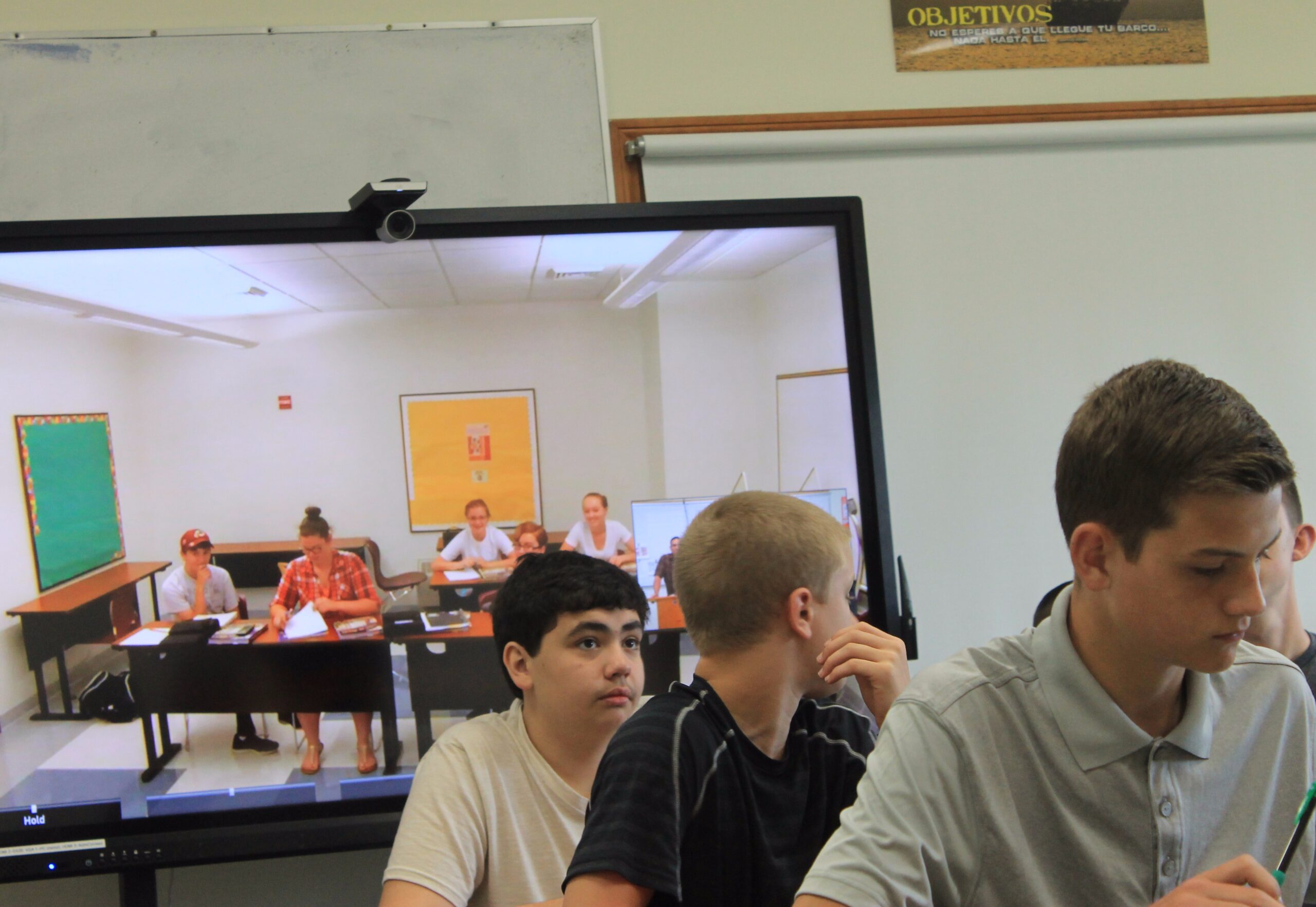
EASTON, Maine — Earlier this year, the Ashland District School was struggling to hire a high school Spanish teacher for the 2017-2018 school year.
Later, when Ashland principal Joel Hall and Easton High School principal Cameron Adams were shooting the breeze, Hall started wondering out loud “what if” the schools could share a teacher, Adams recalled.
That idea has since turned into a reality and could be an option for other rural, Maine schools.
This year, five Ashland students are joining 15 students in Easton for Julio Morin’s Spanish 1 class via an Internet video conference, using distance learning technology available in all Aroostook County schools, according to Adams.
Every weekday at 10 a.m. the Ashland students, supervised by an education aide, sign into the video conference. They watch and hear Morin over a large screen, and Morin and the Easton class see and hear them.
While the schools’ technology teams are still addressing the occasional dropped connection, so far it’s going well, said Morin.
“It’s live, in real-time,” Morin said. “I’m asking them questions, they’re responding, and we can have one-on-one communications back and forth just like they were in the actual room.”
Morin, who has worked in Easton for four years, taught Spanish classes under a similar arrangement in his native Texas, with a class comprised of students physically in one school and virtually attending from another 60 miles away.
Many small, rural schools are facing financial pressures from stagnant state and federal funding and declining enrollment, and are also struggling to recruit and retain teachers as a generation of educators heads into retirement.
According to Adams, Ashland and Easton might be the first school districts in Aroostook County to use the video conference technology to share a class. Every district in The County is equipped with the distance learning technology under a grant awarded several years ago, but it doesn’t seem that any others have used it for joint classes, Adams said.
While there are educational concerns about virtual classes and not having a teacher physically in the room, this will be a good learning experience for educators, administrators and parents in Ashland, Easton and other communities. In this case, Adams said, the relatively small class size is manageable and will help the schools learn about the dynamics of a class with physical and virtual students.
Morin said that he thinks language instruction is also well-suited to the virtual classroom and it’s a better alternative than what some schools are forced to do — using an online language teaching program that doesn’t have a live, human instructor. That was what Ashland was going to use until this option arose.
“I can hear students and they can hear me, and I work on them with pronunciation,” Morin said. “Being able to receive feedback is really important.”
And as a young teacher, Morin said he sees potential in the model. “I think it’s a good direction, especially with our small schools having a hard time finding teachers,” he said.







